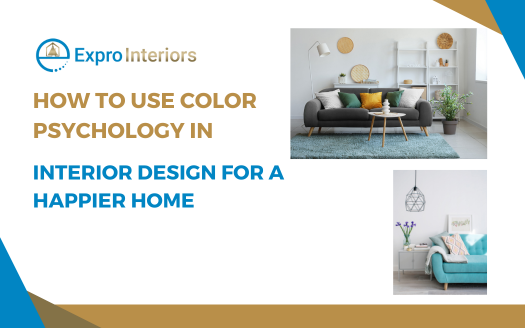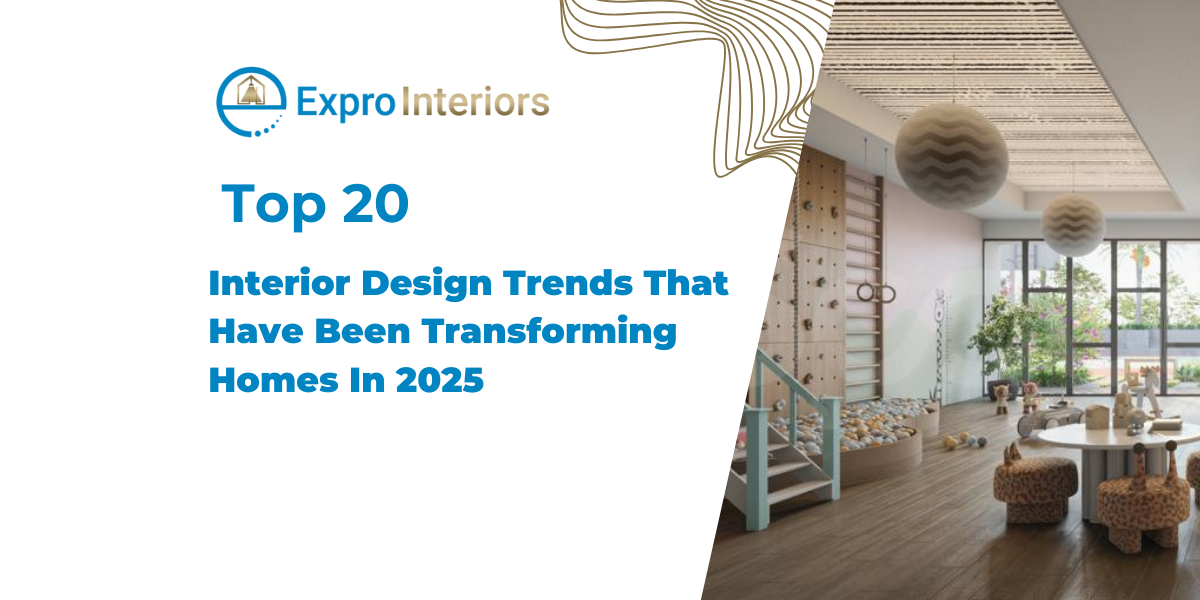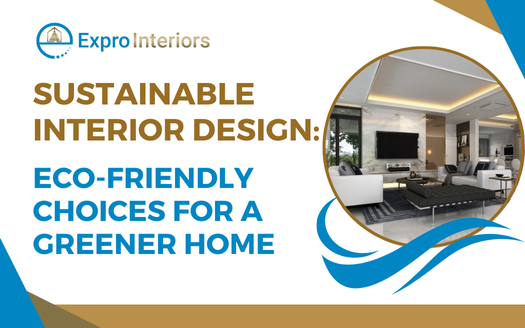Creating a home that’s welcoming to both humans and pets requires a little planning and a lot of love.
Whether you’re just beginning your journey as a pet parent or have years of memories stored in chew toys and scratch posts, well-designed pet-friendly homes can transform daily routines into moments of ease and joy.
So, whether you’re settling into a new home or giving your current space a refresh, this blog will help you create an environment where both you and your pet can thrive.
Table of Contents
ToggleDesigning with Love, Not Just Logic
Before you delve into colors, fabrics, and furniture layouts, take a quiet moment. Picture your pet, whether it’s their excited paws on the floor when you walk in, or their peaceful nap beside the window on a rainy afternoon. These are not just memories, they’re cues!
You want to create a space where your pet feels seen, safe, and loved. So let every design choice begin with this gentle question: How will this make life better, for both of us?
20+ Expert Tips for Designing Pet-Friendly Homes
Here are over 20 tips to help you design a pet-friendly home that’s beautiful, functional, and full of tail wags and purrs.
1. Choose Pet-Friendly Flooring
When it comes to flooring, your pet’s comfort and your home’s cleanliness go hand in hand. Avoid carpets and delicate wooden floors that easily trap fur, dirt, and odors.
Instead, go for scratch-resistant and easy-to-clean options like ceramic tiles, laminate, vinyl, or even sealed concrete. These materials can handle muddy paws, accidents, and energetic play without much wear and tear.
You’ll also want to consider your pet’s comfort underfoot. While hard floors are practical, they can be cold or slippery for pets.
Add washable rugs with rubber backing to create cozy and non-slip zones where your pet can relax safely. These little touches go a long way in balancing durability and comfort for your four-legged friends.
2. Designate a Pet Zone
Give your pet their own corner or nook—it makes them feel secure and gives you more control over their space.
This doesn’t have to be a whole room. It could be a corner of your living area, a spot under the staircase, or a window-side bench. Add a comfy bed, their favorite toys, and maybe a food or water station.
A designated pet area also helps keep the rest of your home organized. When your pet has a spot they recognize as theirs, they’re less likely to wander off with your shoes or hop onto the sofa. This setup is also helpful for training and makes it easier for guests to feel at ease around your pet.
3. Opt for Pet-Friendly Upholstery
Your furniture needs to withstand some serious cuddles, fur, and the occasional claw.
So, go for tightly woven fabrics like microfiber, leather (real or faux), or canvas. These materials resist scratches better and are much easier to clean than materials like velvet or linen, which attract fur like magnets.
Also, stick to medium to dark colors and patterns that camouflage hair and stains better. If you want to be extra prepared, use washable covers or throws over your sofas and chairs.
This way, you can simply toss them into the laundry and keep your home looking fresh without stressing about fur buildup or accidents.
4. Secure Your Windows and Balconies
If you live in an apartment or have high windows, pet-proofing them is a must. Simple adjustments help prevent tragic accidents and give you peace of mind when your pet is enjoying some fresh air.
Install sturdy screens or safety grilles to prevent your pet from slipping through or falling out. Even a curious cat can get into trouble if your window doesn’t have proper barriers.
Balconies need extra caution. So consider installing plexiglass or mesh around the railing to close any gaps. Always supervise your pet when they’re out there, and remove any toxic plants or sharp objects.
5. Hide Electrical Cords and Wires for a Pet-friendly Home
Pets, especially puppies and kittens, love chewing on anything they can find, including electrical cords! This can be dangerous for both your pet and your electronics. However , a little prevention can save you from unexpected vet visits and damaged gadgets
Tuck cords behind furniture or use cord concealers to keep them out of reach. You can also invest in cord organizers, cable boxes, or protective tubing to make your home safer.
If your pets are extra curious, apply a pet-safe bitter spray to discourage nibbling.
6. Use Washable and Durable Fabrics
Life with pets can get messy, so washable fabrics are your best friend. But with the right fabrics, you can keep your home looking clean without having to constantly worry about damage or odors.
When choosing cushions, curtains, or slipcovers, always check if they’re machine-washable. This makes cleanup quick and easy when accidents, shedding, or muddy paws strike.
Durable fabrics like canvas, denim, and microfiber are also less likely to tear or stain. These materials hold up well against daily use and rough play.
7. Create a Feeding Station That’s Easy to Clean
Design a dedicated space for your pet’s food and water bowls, preferably in a corner of your kitchen or near the utility area.
Choose a floor surface that’s easy to wipe and place a mat underneath to catch spills. This setup helps contain the mess and makes daily cleanups faster. Elevated feeders are great for larger dogs or older pets with joint issues. Also, make sure the station is away from busy walkways to avoid accidents.
8. Incorporate Built-In Storage for Pet Supplies
Pet essentials can pile up fast, whether it’s leashes, toys, grooming tools, or treats. To keep your home tidy, plan built-in or designated storage areas near your pet’s zone or entryway. Baskets, pull-out drawers, and wall-mounted hooks work wonders for organizing these items.
Having everything in one place not only makes it easier for you to find what you need, but it also helps with training routines. Your pet will start associating certain drawers or bins with their toys or treats. This will add structure to their day while reducing clutter in yours!
9. Avoid Toxic Plants and Materials
Some houseplants and cleaning supplies that look harmless can actually be dangerous for pets.
Plants like lilies, aloe vera, and pothos are toxic if ingested, while certain floor cleaners and air fresheners can irritate your pet’s skin or lungs. Always check whether your décor choices are pet-safe.
Stick to non-toxic greenery like spider plants, Boston ferns, or herbs like basil and rosemary. Also, switch to pet-friendly cleaning products and keep all chemicals securely out of reach. Always remember, a safe environment means fewer vet emergencies and more peace of mind for you.
10. Build Vertical Spaces for Cats
If you have a cat, vertical space is just as important as floor space. Cats love to climb, perch, and observe their surroundings from up high. Install wall shelves, cat trees, or window perches to give them spots to explore and lounge.
These vertical features satisfy your cat’s natural instincts and also help reduce boredom or stress. Plus, it can protect your furniture from becoming their next climbing project.
11. Install a Pet Door for Easy Access
A pet door can make life a lot easier for both you and your furry friend. It allows them to go outside to relieve themselves or play without you having to constantly open the door.
This is especially helpful if you have a secure backyard or balcony.
Choose a flap style or electronic pet door that suits your pet’s size and your home’s security needs. Make sure it’s installed at the right height so your pet can use it comfortably. With a pet door in place, your pet gets more independence, and your daily routine becomes a lot smoother.
12. Use Pet Gates to Control Access
If there are rooms or areas you want to keep off-limits, like the kitchen during cooking time or a formal living room, a pet gate is the perfect solution. Gates help you manage your pet’s movement, reduce mess, and create safe zones without compromising your home’s look.
Unlike closing a door, a gate gives your pet visibility and airflow while maintaining boundaries.
Look for gates that are sturdy and match your home’s aesthetic, such as wooden or metal designs. Some even come with walk-through latches for your convenience.
13. Choose Rounded Furniture Edges
Sharp furniture edges can hurt playful or energetic pets, especially puppies and kittens. Opt for pieces with rounded corners and soft finishes. This helps prevent injuries when your pet zips around the house or bumps into things during zoomies.
If replacing furniture isn’t an option, you can add corner protectors to sharp surfaces. These simple adjustments make your home a lot safer for pets, and toddlers, too, if you have them. safety and style can go hand in hand with the right planning.
14. Add a Pet Washing Station
If you have the space, a small pet washing station in your bathroom, laundry room, or entryway can be a game changer. It saves your own bathtub from wear and helps you clean muddy paws or give quick rinses with ease. Even a handheld shower and a low basin can do the trick.
Include storage for shampoo, towels, and brushes nearby for convenience. With a designated washing spot, bath time becomes less stressful and your home stays cleaner, especially during monsoon or shedding seasons.
15. Set Up a Cozy Window Spot
Pets love to look outside. Whether it’s birds, people, or passing cars, the view keeps them entertained. Create a comfortable window perch with a cushion, a bench, or a shelf where your pet can relax and enjoy the sights.
This not only prevents boredom but also gives them a warm and sunny spot to nap. Just make sure the window is secure and screen-protected.
Quick tips for designing a pet-friendly home tailored to the size of your property
For Small Apartments or Studios
- Choose multi-functional furniture with built-in storage for toys, treats, or litter supplies.
- Add shelves or cat trees to make use of vertical space.
- Use rugs or mats to define areas for eating, sleeping, or playing.
- Introduce soundproofing or calming fabrics to reduce pet anxiety in tight spaces.
- Invest in an air purifier to manage pet dander and odors effectively.
When designing medium-sized pet-friendly homes
- Use pet gates or stylish dividers to control access without affecting aesthetics.
- Opt for durable, easy-to-clean flooring like vinyl, tile, or sealed hardwood.
- Store grooming tools, leashes, and pet food in accessible but discreet storage.
- Secure windows or balconies for outdoor views without risks.
- Set up dedicated feeding stations to keep mealtime clean and organized.
For Large Pet-friendly Homes or Independent Houses
- Install built-in features like doggy doors, pet wash stations, or even pet rooms.
- Fence in the backyard and add shaded, cozy spots for outdoor comfort.
- Designate specific rooms for sleeping, training, or playtime.
- Choose furniture with scratch-proof upholstery or hidden pet compartments.
- Keep open areas for indoor games, training, or free movement.
Challenges of Designing Pet-friendly Homes by Yourself
Creating a stylish and functional space may seem fun at first, but it comes with more complexity than you might expect, especially when you’re trying to follow modern design trends on your own.
- Overwhelming Number of Choices
When designing on your own, you’re flooded with choices, wall colors, furniture styles, lighting options, textures, flooring, and more. Without a clear understanding of how these elements work together, you might end up picking items that clash or feel out of place.
- Limited Understanding of Design Principles
Designing a trendy or modern space requires more than just following what’s popular on Pinterest or Instagram. It involves balance, scale, lighting, space planning, and practical usage.
Without professional knowledge, it’s easy to make mistakes like overcrowding the space, choosing the wrong layout, or ending up with something that looks great in photos but doesn’t function well in real life.
- Difficulty Staying Within Budget
Most DIY projects start with good intentions but quickly go over budget due to trial-and-error purchases, last-minute changes, or poor planning. You might spend too much on decorative pieces while ignoring essentials like lighting or storage.
On the flip side, trying to cut corners can result in buying low-quality items that wear out quickly and don’t deliver value.
- Time and Energy Drain
Designing pet-friendly homes includes researching, shopping, coordinating deliveries, supervising installations, and solving unexpected problems. If you already have a full-time job or other responsibilities, the process can become exhausting and stretch out far longer than planned.
- Difficulty Visualizing the Final Look
Even if you have a good eye for style, it’s hard to imagine how everything will look when it’s all put together. Without the right tools or experience, you may struggle to visualize the proportions, color combinations, and furniture placements.
This often leads to disappointing results when things don’t turn out the way you pictured them.
- Risk of Trend Fatigue or Outdated Designs
Trends change quickly. What’s hot this year might feel outdated a couple of years down the line. When you DIY without design foresight, you risk going all-in on a trend that doesn’t stand the test of time. It can lead to regret and the need for expensive updates sooner than expected.
Why You Should Choose Professional Interior Designing Services for Pet-Friendly Homes
Designing a home that truly caters to both human comfort and pet safety demands thoughtful planning, smart material choices, and a deep understanding of pet behavior.
While DIY ideas might look appealing online, they often miss crucial elements like scratch-resistant surfaces, washable fabrics, hidden storage for pet supplies, or safe corners and layouts. One small oversight can lead to ongoing maintenance issues or discomfort for your furry friends. That’s where professional help makes all the difference.
Expro Interiors specializes in creating pet-friendly homes that balance style, functionality, and pet comfort seamlessly. We listen to your needs, study your space, and design solutions that make life easier for both you and your pets. From selecting durable flooring to customizing pet zones that blend into your décor, we handle every detail with precision and care.
Whether you’re a first-time pet parent or managing a multi-pet household, we help you build a space that feels beautiful, secure, and effortlessly livable. Let us take the stress out of your design journey.
Contact us today for a consultation and turn your dream of a stylish, pet-happy home into reality.





